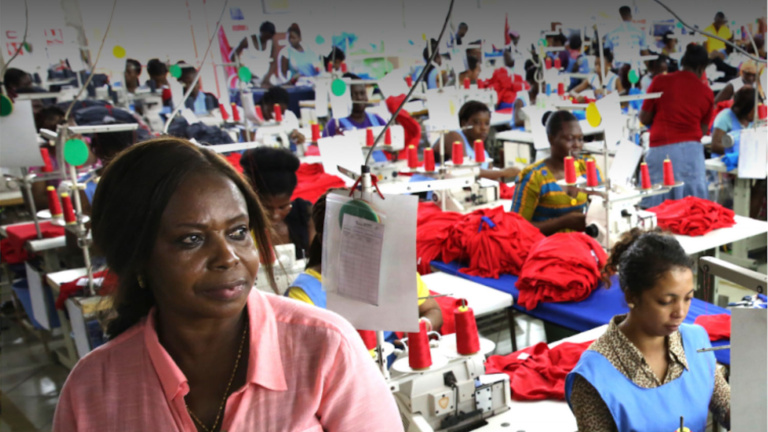
Breaking new ground: Deploying risk capital in frontier markets
In risky markets, donor funds are routinely deployed to make projects “bankable”- in other words to make them capable of attracting commercial financing. This type of financial engineering is known as “blended finance”.
Beyond grants and concessional loans, donors are now venturing into risk management approaches. The catch-all term “de-risking instrument” comprises diverse types of products, with distinct benefits and ease of deployment. In the riskiest markets, financing capital-intensive commercial investment requires comprehensive risk cover. This article presents the business model and track-record of the Private Sector Facility (PSF) – an initiative of the African Development Fund (ADF), established in 2015, with a €1.3 billion target portfolio focused on private sector loans in Low Income Countries (LIC).
In frontier jurisdictions – risk increases the cost of finance
Risk affects the availability and affordability of debt financing. When a business is liquidated after bankruptcy and only once it has repaid all its creditors, the remaining funds are the owners’ equity- its risk capital. The amount of risk capital held by a lender against a specific loan is correlated to the probability that that the borrower will fail to honour their repayment obligation (its risk) and to the severity of the loss if a default occurs. Every dollar of project or corporate loan in a LIC can utilise up to four times as much risk capital as the same project in a middle-income country. Banks are challenged to supply long-term finance, because holding these loans on their balance sheet consumes the bank’s own equity more rapidly than loans in moderate risk countries. They weigh upon lenders’ portfolio quality. This worsens lenders’ credit risk rating and increases their cost of funds. This translates into more expensive goods and services for African consumers, less competitive enterprises, stymied growth and job creation. Unlike their peers covering a broader range of emerging markets, African lenders face a dearth of portfolio rebalancing options. Their development finance challenge is not only one of liquidity, but of risk bearing capacity.
Figure 1: PSF risk participation structure

Risk does not disappear – it always ends up on someone’s balance sheet
To scale up from “billions to trillions” requires third-party mobilisation and the co-option of financial intermediaries’ infrastructure, systems and local knowledge. The innovative finance discipline is rich with experimentation. New bilateral and multilateral development banks (MDBs) are being established, traditional development assistance donors provide debt and equity financing to the private sector. “De-risking” instruments are an increasingly popular remedy to achieve a risk/reward equilibrium compatible with the appetite of commercial lenders and investors.
Yet, risk does not disappear – it always ends up on someone’s balance sheet. In riskier jurisdictions lenders need to share the risks and potential losses and rewards with third parties. The key questions therefore are: What risks are transferred? On whose balance sheet do they end and on what terms?
The African political and credit risk insurance/guarantee sector is atrophied. Available products generally specialise in limited risks or segments, thus hindering their effectiveness as capital relief providers. Political risk cover targets specific events. Credit risk products mostly focus on trade finance or SME portfolios. In regulated sectors and enterprises with sovereign-owned counterparties, implicit or explicit sovereign counter-guarantees are often needed. In most LIC, the symbiosis between political and economic conditions is such that delineating the boundaries between the two may be quite speculative.
In the riskiest markets, tackling the gap for long-dated and high-volume credits to large corporates and projects requires capital relief, which means that the full range of default risks must be covered. Project-level risk mitigation/sharing structures have high transaction costs because of their limited scale and bespoke application. This limitation has prompted the creation of new wholesale structures offering risk management products through established development financiers.

The Private Sector Facility – a blended risk participation vehicle for private sector lending in LIC
Like other financial institutions, the African Development Bank (AfDB) has been challenged to grow its private sector portfolio in the riskiest jurisdictions. In 2014, the African Development Fund allocated a €195 million grant for the establishment of a leveraged risk participation fund. The Facility was established to share in the risk of the Bank’s private sector operations to enable the Bank to stretch its balance sheet in the riskier markets, without compromising its AAA risk rating. In the light of implementation track record, the 14th Replenishment of the Fund allocated a further € 240 million thus bringing the PSF’s target portfolio of credit risk exposures to € 1.3 billion.
At inception, the PSF’s sponsors – the AfDB and Fund – were concerned that the vehicle should be structured in a way that would achieve leverage, effectiveness as a risk transfer vehicle, financial sustainability, and mitigate the risk of self-dealing and moral hazard. These concerns were addressed in the design of the risk sharing methodology, legal status, eligibility criteria and governance.
The PSF is a risk participant – it does not affect a project’s credit quality but its partial credit risk guarantee is irrevocable, unconditional and first-demand. The Facility intervenes when projects meet its eligibility criteria and portfolio construction parameters. To mitigate moral hazard risks, it covers only part of the credit risk- losses are carried on shared basis and simultaneously with as the Bank. The AfDB acts as the lender of record and each PSF risk participation is backed by PSF equity at the average leverage ratio of 1:3. In case of default, the AfDB calls on the PSF to cover its share of the defaulting loan’s repayment and interest. Given the high risk profile of its underlying exposures, PSF’s target level of credit enhancement is calibrated at a BBB equivalent rating – a higher rating would have resulted in a lower leverage ratio. PSF is bankruptcy remote from both the ADF and the AfDB and is managed independently. The ADF Board is the governing body of the Facility, and a PSF Administrator is responsible for its day-to-day management.
The PSF’s risk and reward sharing modality is a key enabler of its business model. As a leveraged trust fund capitalised through a grant, like a revolving fund, the PSF has to operate in a way that ensures its solvency – future losses must be covered from revenue. The PSF does not introduce loan pricing market distortion but enables an optimisation of risk capital, with the redeployment of risk capital to new earning assets.

Some results
At end 2017, almost a third of the PSF’s target portfolio has been committed with €460 million of guaranties approved – and signed guarantees stood at €340 million. Close to 44% of the active portfolio is in the infrastructure sector, 32% in financial, and 24% in the agriculture and industries sectors. Projects range from a rail corridor in Malawi and Mozambique, a food production factory in Mali, a commercial forestry project in Ghana, a wind power project in Kenya, a cement plant in the Democratic Republic of the Congo, a local currency line of credit to a Sierra Leonean SME bank focusing on women entrepreneurs, a power plan in Sierra Leone, and a trade finance line of credit to a Zimbabwean commercial bank.
The PSF contributes to the achievement of development results at two levels. First, PSF contributes to transaction-specific development results. Second, it enables development results through the redeployment of risk capital to new projects, which may not have been feasible given the risk capital limits capping the Bank’s private sector portfolio growth in riskier markets. Since the PSF began operations in 2015, the Bank’s private sector financing in LIC has increased in absolute and relative terms. It now represents two-thirds of the volume financed up from 30% in 2014.
Figure 2: Highlights of development results at transaction level

Outlook for the evolution of the PSF in the medium term- towards an African credit risk exchange?
The Private Sector Facility is an effective balance-sheet optimisation instrument for lending in riskier jurisdictions. Over the next three years, its portfolio is set to grow in line with the ambitions of the Bank’s Ten Year Strategy and its five scaled-up core development priorities for the continent, namely the High 5s – Light up and power Africa, Feed Africa, Industrialise Africa, Integrate Africa and Improve the Quality of life of the People of Africa. The immediate priority is to enhance its robustness and effectiveness as a credit risk counterparty. PSF is reaching out to prospective partners to secure additional contributions alongside with reinsurance and co-guarantees.
Beyond this consolidation phase, the PSF’s business model has the potential to be truly transformational. It provides an avenue for prospective investors to deploy risk capital to a new asset class without the hassle factor of direct lending. It could also provide other African lenders an opportunity to stretch their risk capital in riskier jurisdictions. Evolving from a captive risk participation vehicle into an African credit risk exchange would see the Facility simultaneously acquire credit risk from a diverse range of African financial institutions and on-selling credit risk to investors.
The PSF is already operational and is structured to achieve scale. With its emerging track record and capitalisation, it is uniquely positioned to successfully evolve into the leading provider of long-dated exposure for the continent- enabling lenders to become more effective providers of private sector financing across their countries of operation.
About the author
Cécile Ambert is the Private Sector Facility Administrator – an innovative facility funded by the African Development Fund, at the African Development Bank.
Read the full magazine issue









